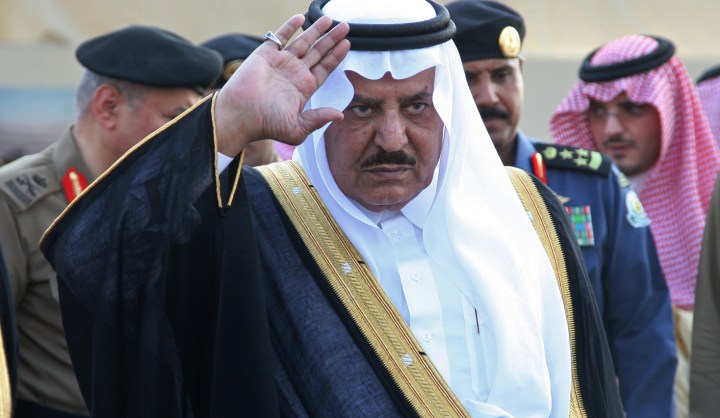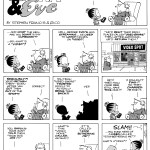World
Saudi Arabia beyond Nayef’s death: a country gripped by identity crisis

Saudi Arabia’s late Prince Nayef bin Abdul Aziz was the stern face of the Saudi royal family. He was unmoved by calls for reform and unrelenting to threats against Saudi security. But even as his successor was quickly named, ensuring the great Saudi pastime of political stability, Nayef’s death lays bare the fragility of the Saudi kingdom. By KHADIJA PATEL.
To the casual observer, Prince Nayef bin Abdul Aziz was a crown prince of Saudi Arabia and a vastly influential member of the ruling family. Serving under three kings he was, as Minister of the Interior since 1975, in charge of winning the allegiance of the country’s police forces, steering its intelligence gathering apparatus, controlling a dizzying array of special force units, elite counter-terrorism squads and border protection forces. Nayef also controlled the country’s infamous religious police.
But as much as Nayef was respected, revered even, he was also reviled. Ably assisted by his son, Muhammad, Nayef was a moderator of the various influences, ideological and physical, threatening to scupper the country his family had fought so hard to create. He was the gatekeeper of the status quo, the guardian of Saudi Arabia as we know it.
In the US, Nayef has been hailed for his commitment to squashing al-Qaeda. His own war against terror came, however, reluctantly. He initially refused to believe the September 11 attacks were carried out by Saudis – 15 of the 19 hijackers are alleged to have hailed from the kingdom – but Nayef described the attacks as a Jewish plot, insisting Saudi Arabia was “being framed”.
It would take al-Qaeda’s bombing spree in Saudi Arabia to convince Nayef of the need to fight terror. He cracked down, and he cracked down hard. Hundreds of people were arrested and killed, and al-Qaeda’s operations in the kingdom remain largely curtailed. Al-Qaeda, you see, had become a threat to the royal family, a threat to the security of the country and the lay of the land.
Unlike King Abdullah, who was rosy-picture-painted as a reformer, Nayef was obstructive to domestic reforms. He opposed almost any change to the kingdom’s deeply conservative laws, notably granting women the right to drive. It was Nayef who, in 1990, legalised a religious edict against the call for women to drive – all part of the grand plan to keep the religious elite happy, assuring them of the Al-Sauds’ commitment to the protection of the “virtue” of women in exchange for their allegiance. This is what had him tell a conference of clerics last year that he would “never sway from, and never compromise on” Saudi Arabia’s strict interpretation of Wahhabi Islam.
Michael Stephens, a researcher at the Royal United Services Institute in Qatar, points out, “Nayef was also adept at keeping the clerical establishment on its toes, primarily through a mixture of coercion and redistribution of land grants. This granted him great sway over the behaviour of the kingdom’s garrulous religious sheikhs, and his death leaves space for a potentially more assertive clerical establishment in the coming months.”
It is the beguiling contradiction of the Saudi royal family that puzzles the most – its persistence with Wahhabi Islam is a far cry from the libertine lives led by most of its members. Nayef’s family is no different in this regard. In clinging to Wahhabi Islam, however, Nayef was protecting a vital tenet of the identity of the Saudi state – the co-operation of the religious elite that maintains the status quo and his family’s power.
This preservation of the Saudi state also extended to Nayef’s contribution to foreign policy. He is said to have been the prince most hostile to the Muslim Brotherhood, even as the group gained prominence in Egypt. He is said to have blamed trends of radicalisation squarely on the shoulders of the Brotherhood, which, after all, represent a threat to the ethos of Saudi Arabia.
In truth, although Nayef supported the decision to send troops to Bahrain to bolster the flailing monarchy, that jaunt was not entirely his doing. It is in Yemen that Nayef’s legacy has been most acutely felt. Forcing that country’s many challenges to remain behind the border, when it threatened to spill over into Saudi Arabia, bought Nayef a sense of insulation from the troubles of malnutrition, refugees and al-Qaeda.
Many Saudis saw Nayef as a brutal oppressor, but his was never an easy job. “What we won by the sword, we will keep by the sword,” he told a group of dissidents in a 2003 meeting. His job was to make sure the country remained stable and secure, to protect the country his family built, to ensure all the tenets that have gone into the construction of “Saudi Arabia” remain intact, to protect the power of his family.
And though Nayef is dead, Nayefism lives on. Stephens notes, “[In] the Interior Ministry, it was largely the efforts of Nayef’s son, Muhammad, that led to the massive modernisation programmes and restructuring policies that are currently taking place. Budget allocation, personnel changes, and policy priorities have, for the most part, been set on their course. The interior ministry is gigantic: the ship cannot be turned around simply because Nayef is dead. Indeed, so pervasive is Muhammad’s influence that such a move would likely be impossible. Although Prince Ahmed bin Abdulaziz, Nayef’s full brother, has been promoted to head the ministry, the ministry will likely remain the de facto domain of the Nayef clan.”
Nayef was not the traditionalist he has been made out to be. He was a pragmatist, well aware of what was constantly at stake – his family’s power.
In the last few years, the impact of strong structural socio-political and economic transformations around the world has resulted in greater challenges to the Saudi royal family. King Abdullah managed to quell ripples of discontent last year by throwing a few hundred billion dollars, packaged as a welfare programme, to the severe crisis of youth unemployment in the country. He bought the acquiescence of young Saudis for a little while more, but even the Al-Sauds knew this was a temporary solution to a far-reaching problem.
And though the legacy of Nayef lives on in his son and the kingdom’s policies, the pressures against the kingdom are set to increase, and the Saudis will rely heavily on Muhammad to ensure the safety of the state. DM
Read more:
- Tensions in the House of Saud in The New York Times
- The Underestimated Prince Nayef in Foreign Policy
Photo: Saudi Interior Minister Prince Nayef bin Abdul-Aziz salutes during Saudi security forces parade in preparations for the annual Muslim pilgrimage (Hajj) in Mecca December 3, 2008. REUTERS/Susan Baaghil




















 Become an Insider
Become an Insider